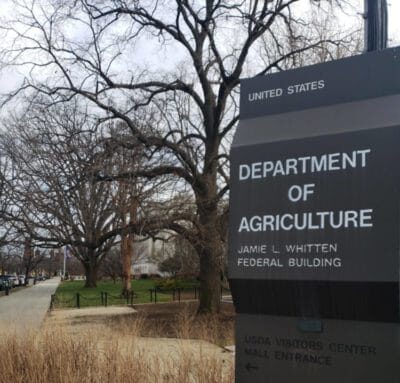An online tool is now available to help ranchers document and estimate payments to cover feed transportation costs caused by drought, which are now covered by the Emergency Assistance for Livestock, Honeybees and Farm-raised Fish Program (ELAP). The U.S. Department of Agriculture (USDA) updated the program this year to include feed transportation costs as well as lowered the threshold for when assistance for water hauling expenses is available. USDA’s Farm Service Agency (FSA) will begin taking applications this fall.
“Drought has had a tremendous impact on producers, and we are thinking outside the box to help producers mitigate the effects of drought, which is a necessary first step to realizing the Secretary’s vision of ensuring agricultural producers get a fair share of the food dollar,” said FSA Administrator Zach Ducheneaux. “From climate change to COVID-19, we are continuously working to make our programs as flexible as possible and so they effectively help producers face today’s challenges.”
The new ELAP Feed Transportation Producer Tool is a Microsoft Excel workbook that enables ranchers to input information specific to their operation to determine an estimated payment. Final payments may vary depending on eligibility.
To use the tool, ranchers will need:
- Number of truckloads for this year.
- Mileage per truckload this year.
- Share of feed cost this year (if splitting loads).
- Number of truckloads you normally haul.
- Normal mileage per truckload.
- Share of normal feed cost
The tool requires Microsoft Excel, and a tutorial video is available at fsa.usda.gov/elap.
Updates to ELAP
ELAP provides financial assistance to eligible producers of livestock, honeybees and farm-raised fish for losses due to disease, certain adverse weather events or loss conditions as determined by the Secretary of Agriculture. ELAP now covers feed transportation costs where grazing and hay resources have been depleted. This includes places where:
- Drought intensity is D2 for eight consecutive weeks as indicated by the U.S. Drought Monitor; or
- Drought intensity is D3 or greater
The tool calculates the estimated payment for feed transportation assistance, but it is not an application. Once FSA begins accepting applications later this fall for feed transportation assistance, ranchers should contact their FSA county office to apply. To simplify the application process, ranchers can print or email payment estimates generated by this tool for submission to FSA. The deadline to apply for ELAP, including feed transportation costs, for 2021 is Jan. 31, 2022.
ELAP already covers above normal costs for hauling water to livestock in areas where drought intensity is D3 or greater on the drought monitor. FSA is also updating ELAP to also cover water hauling in areas experiencing D2 for eight consecutive weeks, lowering the threshold for this assistance to be available. Program benefits are retroactive for 2021.
Payment Calculations
USDA will reimburse eligible ranchers 60% of feed transportation costs above what would have been incurred in a normal year. Producers qualifying as underserved (socially disadvantaged, limited resource, beginning or military veteran) will be reimbursed for 90% of the feed transportation cost above what would have been incurred in a normal year.
USDA uses a national cost formula to determine reimbursement costs that will not include the first 25 miles and distances exceeding 1,000 transportation miles. The calculation will also exclude the normal cost to transport hay or feed if the producer normally purchases some feed. For 2021, the initial cost formula of $6.60 per mile will be used (before the percentage is applied).
Eligibility
To be eligible for ELAP assistance, livestock must be intended for grazing and producers must have incurred feed transportation costs on or after Jan. 1, 2021. Although producers will self-certify losses and expenses to FSA, producers are encouraged to maintain good records and retain receipts and related documentation in the event these documents are requested for review by the local FSA County Committee.
####
USDA – 2021


